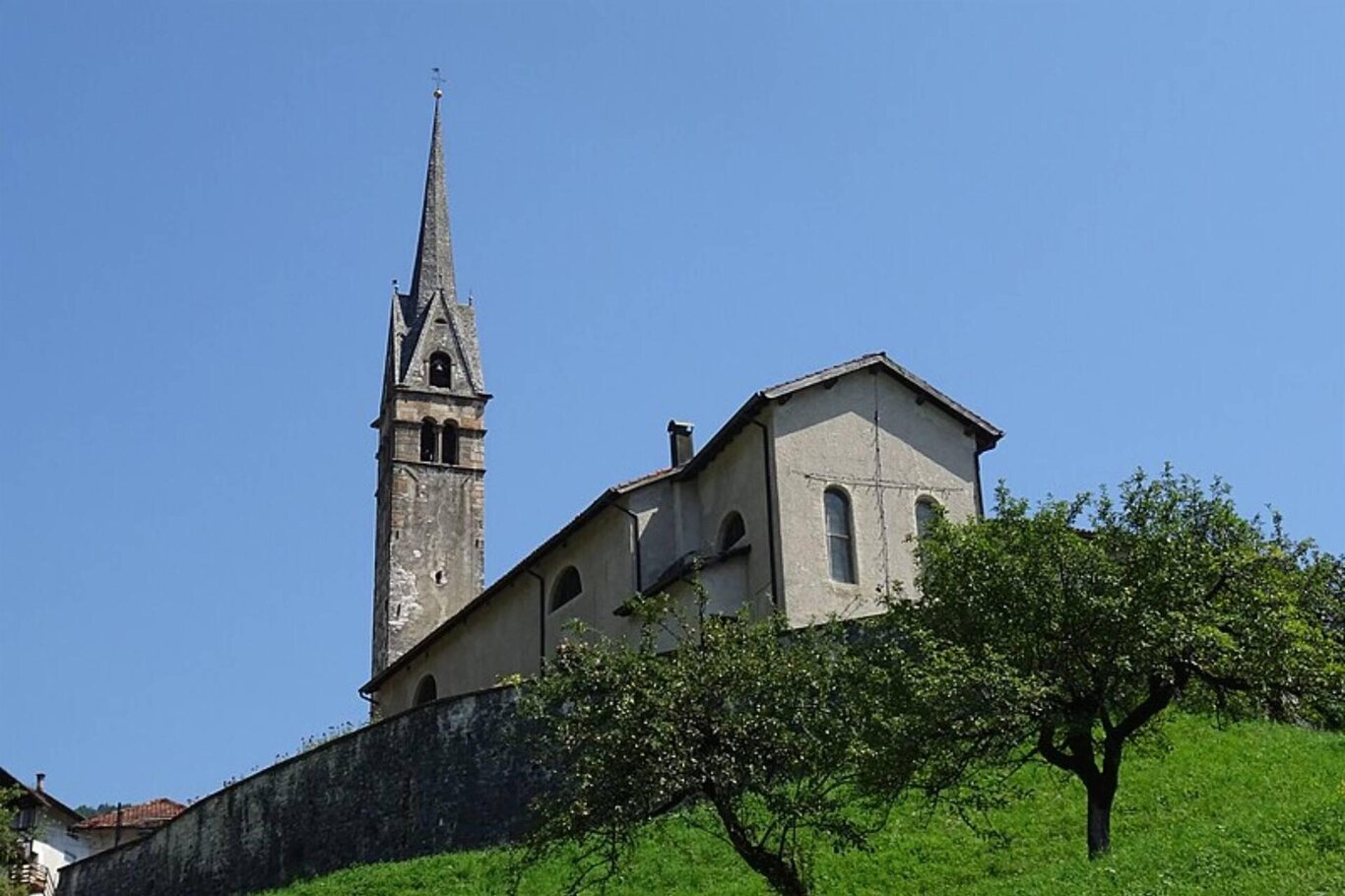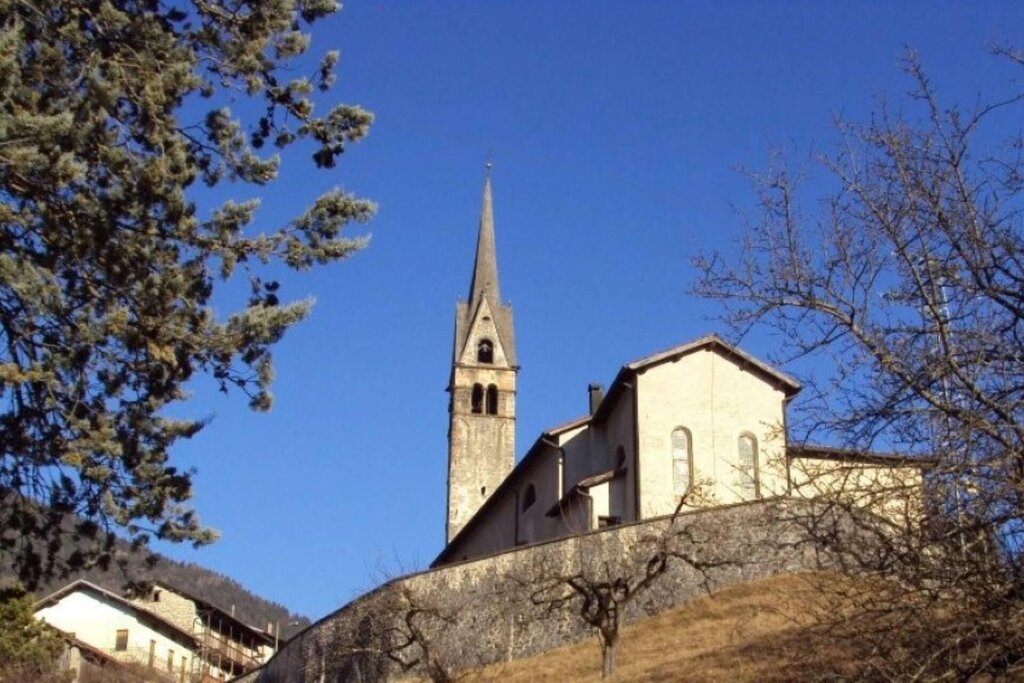The main entrance faces northeast and is accessed by a short but steep staircase.
It has a simple facade with a central rose window, uncovered during the restorations of 1968, and a beautiful Romanesque portal. The interior is a single nave with a rectangular apse covered by a ribbed vault.
Around 1514, the entire nave was frescoed, incorporating various religious scenes into an airy loggia, still reflecting a Gothic style, opened to mountainous landscapes.
The altars (five) are made of masonry with carved and painted wooden backs, and are dedicated to the Sacred Heart, St. Anthony of Padua, the Madonna of the Rosary, and Saints Anthony the Abbot, Gotthard, and Valentine: on the latter, there is a wooden group of the Sorrowful Mother (Vesperbild) in a Gothic style. The baptismal font, made of a single block, dates back to the 18th century.
The bell tower, added later to the church (15th century) in Romanesque-Gothic style, is 36 meters tall and has a beautiful spire covered with shingles. The latest restoration revealed an inscription dating back to 1640, likely the year of the roof's reconstruction.
The two "consecration crosses" opposite each other in the nave are the oldest traces and indicate the places for officiating specific rites. On the west wall, we find three different layers of frescoes: the most recent one, in chronological order to the crosses, consists of an arch with a central panel containing barely recognizable images of the Madonna and an unidentified saint and presumably another figure in a mirrored position to her.


